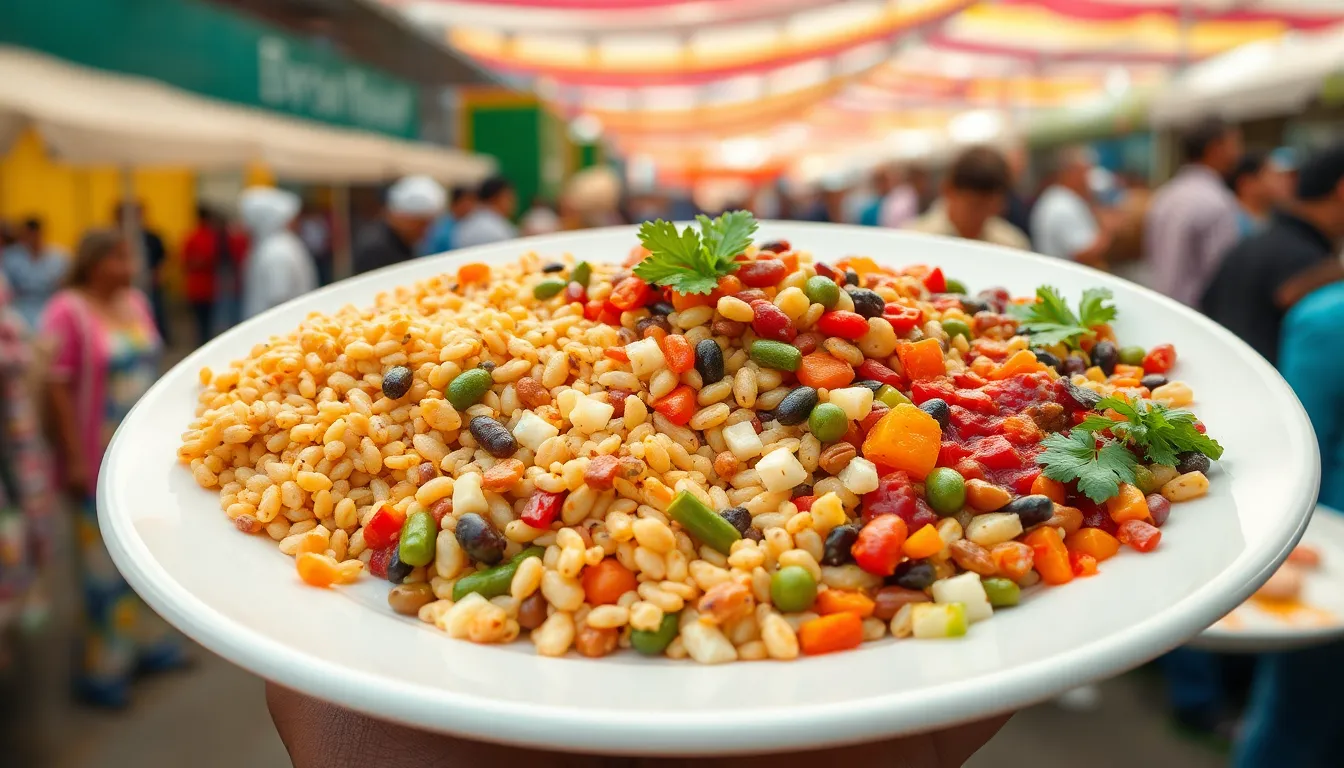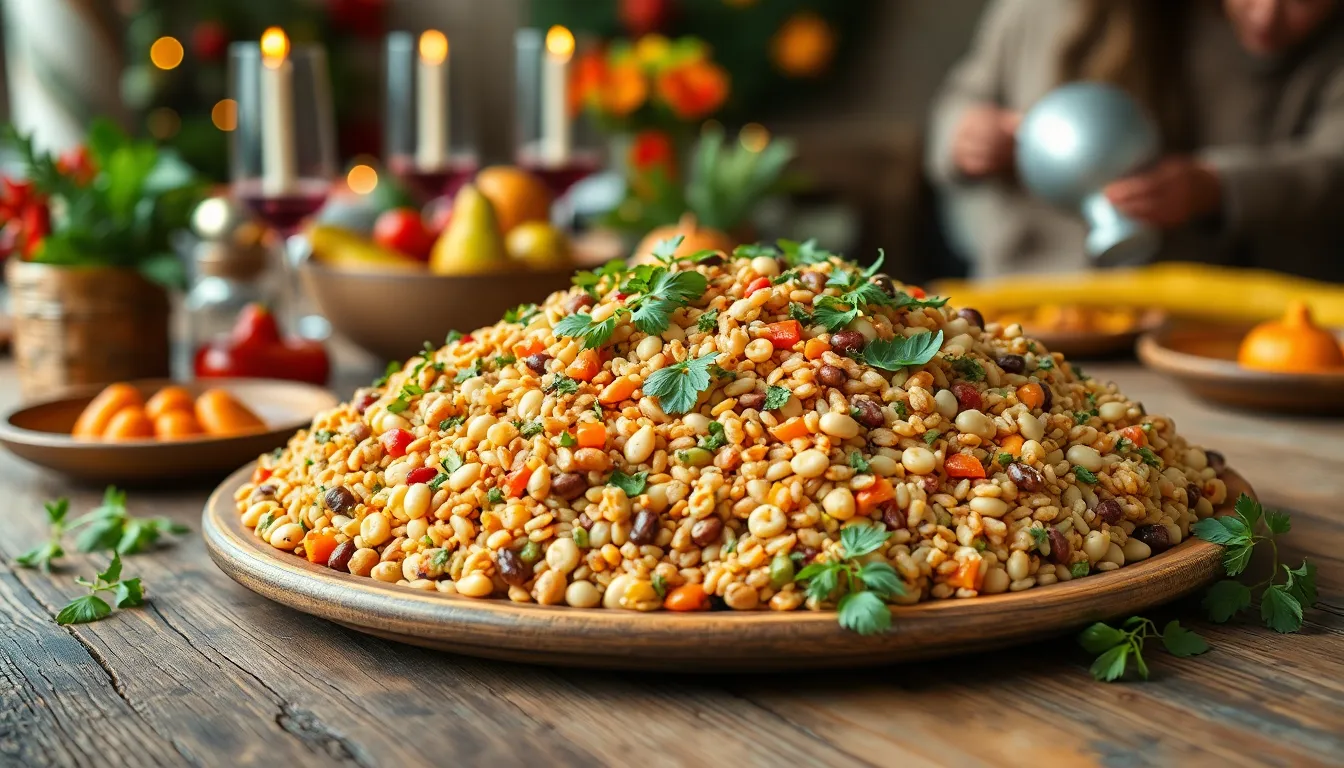In a world brimming with culinary wonders, babemashek stands out like a rock star at a library. This delightful dish, often overshadowed by its flashier counterparts, deserves the spotlight for its rich flavors and cultural significance. It’s not just food; it’s a celebration of tradition wrapped in a warm, inviting embrace.
Table of Contents
ToggleOverview of Babemashek
Babemashek stands out as a distinctive dish within its cultural context. This meal features a blend of ingredients that create a harmonious flavor profile. Traditional recipes often include staples like grains and vegetables, showcasing regional produce. Community gatherings often center around babemashek, emphasizing its role in social connections.
People prepare babemashek using methods passed down through generations. Each family may add personal touches, reflecting their unique culinary heritage. The dish not only nourishes but also serves as a bridge linking families and friends. Festivals frequently highlight babemashek as a symbol of abundance and togetherness.
Ingredients used in babemashek vary, enhancing its versatility. Common components such as beans, lentils, and seasonal herbs contribute to its wholesome appeal. Variations may exist based on local customs and available resources, showcasing the adaptability of this dish.
Cultural significance remains paramount; babemashek creates lasting memories during celebrations. It’s often featured during holidays or milestone events, reinforcing its importance in communal traditions. The flavors experienced in babemashek connect individuals to their history and ancestry.
Enthusiasts honor babemashek through cooking classes and food festivals, spreading awareness about its rich legacy. Chefs explore modern takes on this classic dish, merging tradition with contemporary innovation. Such efforts ensure that babemashek continues to thrive, captivating new generations with its unique essence and cultural significance.
Cultural Significance of Babemashek

Babemashek holds a unique position within its cultural landscape, serving as a symbol of community and tradition. This dish celebrates familial bonds and collective memories.
Historical Context
Rooted in tradition, babemashek emerged from agricultural societies that relied on accessible ingredients. Historical records indicate this dish has been prepared for centuries, often featuring local grains, beans, and vegetables. Each variation reflects regional agricultural practices and seasonal availability. Oral histories passed down family knowledge, highlighting its importance in rituals and celebrations. Significant events, such as weddings and harvest festivals, routinely included babemashek, underscoring its role in community bonding.
Modern Interpretations
Contemporary chefs reinterpret babemashek, blending traditional techniques with innovative flavors. Restaurants may offer creative twists, incorporating global ingredients while maintaining core elements. Additionally, culinary enthusiasts explore its versatility in cooking classes, attracting diverse audiences. Social media showcases stunning presentations, inspiring home cooks to experiment. Food festivals often feature babemashek, highlighting its cultural heritage while engaging younger generations. Each modern interpretation ensures that this cherished dish remains relevant in today’s culinary landscape.
Characteristics of Babemashek
Babemashek features distinct visual aspects and deep symbolic meanings that enhance its cultural significance.
Visual Elements
Colorful presentations define the visual identity of babemashek. Vibrant ingredients like fresh greens, earthy beans, and an array of grains create a visually appealing dish. Often arranged in a communal platter, it encourages sharing and emphasizes togetherness. Seasonal herbs garnish the top, adding pops of color and freshness. Presentation varies by region, with each cook adding unique flair to match local customs.
Symbolic Meanings
Symbolism plays a key role in the significance of babemashek. It represents unity, bringing families and communities together around shared meals. Often tied to celebrations, this dish signifies abundance and gratitude during important occasions like weddings or harvest festivals. Each serving reflects a connection to heritage, embodying the traditions passed through generations. Babemashek also represents resilience, originating from agricultural practices that highlight the value of cooperation and resourcefulness in communities.
Popularity and Influence
Babemashek enjoys growing popularity due to its rich flavors and cultural significance. Social media plays a crucial role in this trend, showcasing beautiful presentations of the dish.
Social Media Trends
Food influencers highlight babemashek on platforms like Instagram and TikTok, using vibrant images to attract attention. Trendy cooking challenges encourage users to share their experiences with the dish, fostering a sense of community. Hashtags related to babemashek connect enthusiasts, facilitating wide engagement and sharing. Video tutorials often feature step-by-step instructions, making preparation accessible. These platforms amplify visibility, reaching diverse audiences eager to explore culinary traditions.
Global Reach
Babemashek transcends geographical boundaries, with chefs adapting its elements to suit diverse palates. Global restaurants incorporate local ingredients, bringing a fresh perspective to the dish while respecting its roots. Culinary festivals celebrate babemashek, fostering international appreciation and sparking interest in traditional recipes. As more people embrace the dish, it finds its place in multicultural events, highlighting its versatility. The dish’s adaptability and cultural resonance continue to inspire culinary exploration worldwide.
Babemashek stands as a testament to the power of food in bringing people together. Its rich flavors and vibrant presentations not only nourish the body but also celebrate cultural heritage and community bonds. As chefs and home cooks continue to innovate while honoring tradition, babemashek remains a beloved dish that bridges generations. The dish’s adaptability ensures it stays relevant in today’s culinary landscape, inviting new audiences to experience its significance. Through social media and food festivals, babemashek’s legacy flourishes, inspiring a deeper appreciation for the traditions it represents.



